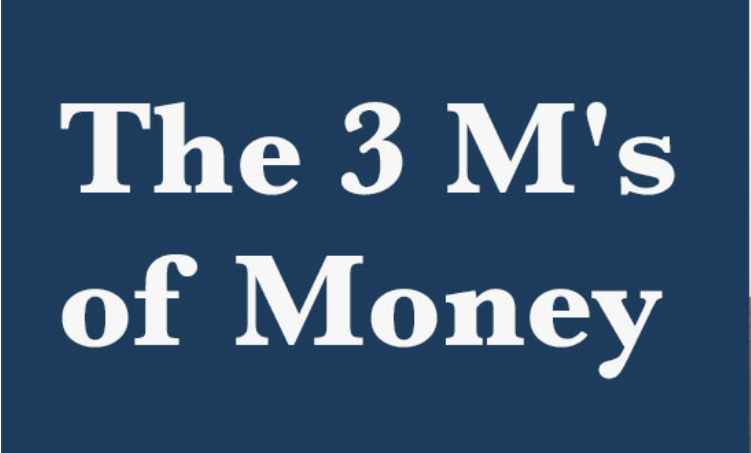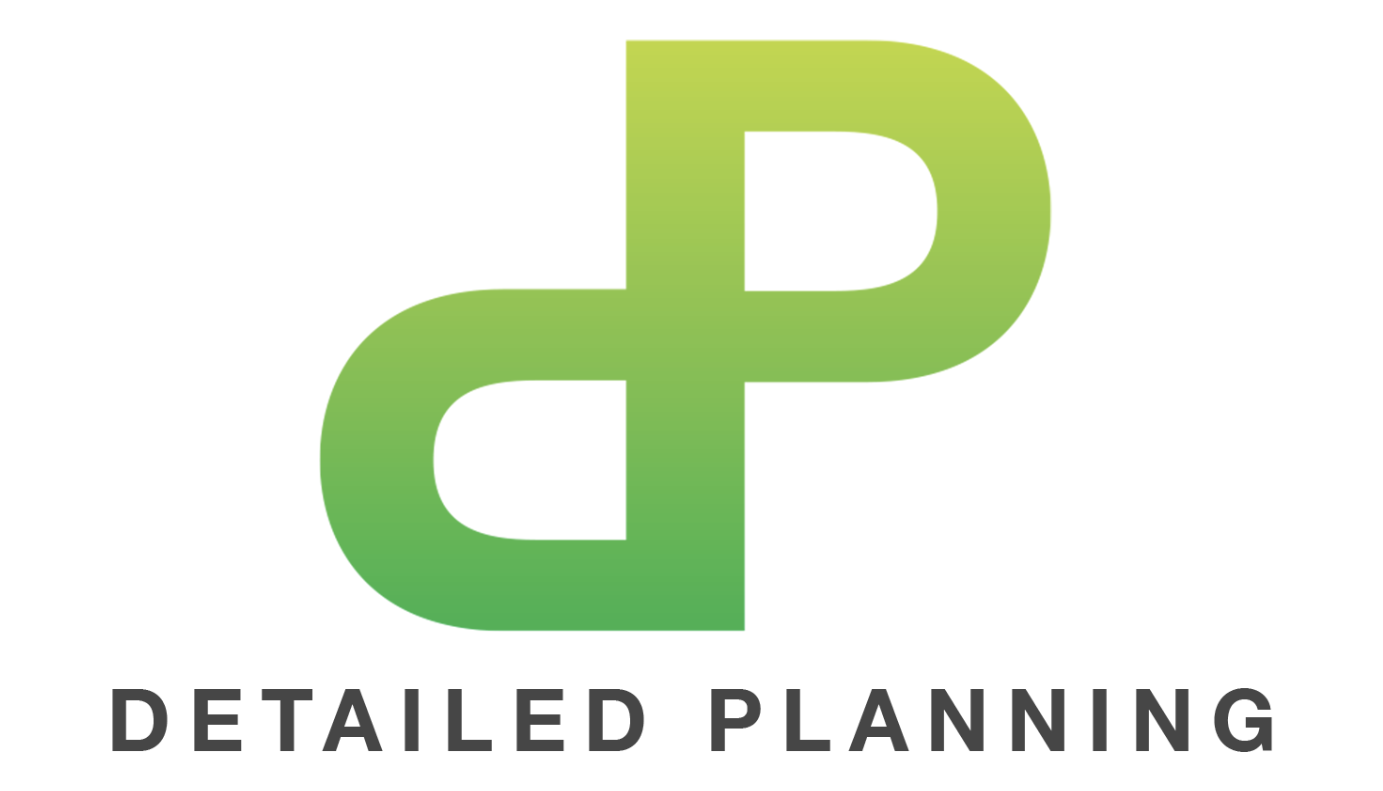A Money Management Blueprint
Introduction to Managing Your Money: The Three Ms (Money In, Money Out, Money For Future)
The purpose of this plan is to help you gain complete control of your money. This blueprint focuses on mastering the Three Ms: Money In (MI), Money Out (MO), and Money For Future (MF). By consistently applying the powerful Assess, Plan, Do cycle to each of these fundamental flows, you will gain the visibility and intentional control needed to achieve your financial goals.

Part 1: The Core Concepts (Money In, Money Out, Money For Future)
This section outlines the essential concepts for each money flow, viewed through the lens of the Assess, Plan, Do methodology.
1.1 Money In (MI): How Much Income Do You Make, Exactly?
This encompasses all sources of funds flowing into your accounts.
Concept: To have a complete and accurate picture of all your income, and to identify opportunities for growth.
Assess: Verify actual income against targets and identify trends.
Plan: Set clear income targets and strategies to achieve them.
Do: Actively generate and meticulously record all incoming funds.
1.2 Money Out (MO): How Much Do You Spend?
This covers all funds flowing out of your accounts, including spending and debt repayments.
Concept: To consciously control and categorize your spending, ensuring it aligns with your priorities and budget, including efficient debt reduction.
Assess: Review actual spending against your budget and track debt reduction progress.
Plan: Create a detailed budget for all expenditures, prioritizing essential needs and debt repayment.
Do: Spend mindfully, adhere to your budget, and make timely debt payments.
1.3 Money For Future (MF): How Much Do You Save?
This pertains to funds set aside for savings, investments, and long-term financial security.
Concept: To consistently build a foundation for your financial future by setting aside and growing funds for specific goals.
Assess: Evaluate the growth of your savings and investments and overall progress towards long-term security.
Plan: Define clear savings and investment goals, and allocate dedicated funds towards them.
Do: Automate and consistently contribute to your future funds, allowing them to grow.
Part 2: Detailed Execution (Phases & Steps with QuickBooks Integration)
This section expands on each money flow, detailing concrete instructions and actionable steps for implementation, leveraging your QuickBooks software.

Phase 1: Assessing Your Money (The "Assess" Phase)
This phase focuses on understanding your current financial reality across all three money flows.
2.1.1 MI: Income Assessment
Run Income Reports: Generate and analyze reports showing your income over time.
Action: Routinely pull "Profit & Loss" reports from QuickBooks to see total income.
QuickBooks Integration: Master navigating QuickBooks reporting functions to extract meaningful income data.
Verify Accuracy: Reconcile your recorded income with actual bank deposits.
Action: Perform monthly bank reconciliations in QuickBooks to ensure all income is accounted for.
Compare to Targets: Measure your actual income against your planned goals.
Action: Review whether you met, exceeded, or fell short of your income targets.
2.1.2 MO: Expenditure Assessment
Run Spending Reports: Generate and analyze reports that detail your expenditures.
Action: Routinely pull "Budget vs. Actual" reports from QuickBooks to compare planned spending with actual spending.
QuickBooks Integration: Use transaction reports by category to pinpoint areas of over or underspending.
Verify Accuracy: Reconcile your QuickBooks records with your bank and credit card statements.
Action: Perform monthly reconciliations to ensure all spending transactions are accurate.
Compare to Plan: Measure your actual spending against your budgeted amounts.
Action: Analyze variances to understand where money is going and identify areas for adjustment.
Monitor Debt Reduction Progress: Track how quickly your debt balances are decreasing.
Action: Regularly check the remaining balance on your debt accounts against your payoff timeline.
2.1.3 MF: Future Funds Assessment
Assess Growth & Security: Evaluate the growth of your savings and assets over time.
Action: Review account statements for your emergency fund, retirement accounts, and investment portfolios.
QuickBooks Integration: Use your Balance Sheet report in QuickBooks to see the overall growth of your assets.
Compare to Goals: Measure your progress against your defined savings and investment targets.
Action: Determine if you are on track to meet your long-term financial goals.
Phase 2: Planning Your Money (The "Plan" Phase)
This phase focuses on defining your financial intentions and setting targets for all three money flows, based on your assessments.
2.2.1 MI: Income Planning
Identify All Income Streams: List every source of income for both your business and personal finances.
Action: Create a comprehensive list of all income sources.
QuickBooks Integration: Ensure all business income is accurately categorized and recorded. If tracking personal finance in QuickBooks, create appropriate income accounts.
Set Income Targets: Establish realistic monthly or annual income goals.
Action: Determine a clear target for the total money you aim to bring in.
QuickBooks Integration: Use QuickBooks reports to analyze past income and set future targets.
2.2.2 MO: Expenditure Planning
Categorize & Budget Your Spending: Define specific categories for your "Needs" and "Wants," and assign budget amounts to each.
Action: Create a detailed budget structure that reflects all your spending areas.
QuickBooks Integration: Utilize QuickBooks' "Categories" or "Chart of Accounts" to establish detailed expense accounts. Use the "Budget" feature to set monthly targets for each.
Prioritize Debt Payoff: Treat debt payments as a critical, non-negotiable budget item, allocating funds before discretionary spending.
Action: Determine the specific aggressive amount for your debt repayment.
QuickBooks Integration: Ensure this is a clearly defined category in your budget.
2.2.3 MF: Future Funds Planning
Define Savings & Investment Goals: Clearly articulate the purpose and target amount for each future fund (e.g., emergency fund, retirement, specific long-term goals).
Action: Specify why you are saving and investing.
QuickBooks Integration: Create appropriate accounts or sub-accounts within QuickBooks to track these separate funds.
Allocate for MF: Determine specific amounts to be set aside for savings and investments each month or pay period.
Action: Treat these allocations as essential, non-negotiable "expenses" in your budget.
QuickBooks Integration: Ensure these allocations are part of your QuickBooks budget.
Phase 3: Doing Your Money (The "Do" Phase)
This phase is about actively executing your financial plans across all three money flows.
2.3.1 MI: Income Generation & Tracking
Execute Income Strategies: Work actively to achieve your income targets.
Action: Apply strategies to maximize your earnings (e.g., seek new clients, explore side hustles).
Record All Income: Ensure every dollar received is logged promptly.
Action: Input all income into QuickBooks as it arrives.
QuickBooks Integration: Categorize all deposits accurately within QuickBooks, assigning them to the correct income accounts.
2.3.2 MO: Mindful Spending & Debt Repayment
Mindful Spending: Consciously adhere to your budgeted spending targets.
Action: Before significant purchases, check your budget in QuickBooks to ensure alignment.
QuickBooks Integration: Regularly review transactions imported via bank feeds and categorize them to align with your budget.
Make Planned Debt Repayments: Ensure all debt payments are made on time and for the planned amount.
Action: Set up automatic payments for consistency where possible.
QuickBooks Integration: Record these payments accurately to track debt reduction.
2.3.3 MF: Consistent Saving & Investing
Automate Transfers: Set up recurring transfers to all savings and investment accounts, making saving automatic.
Action: Schedule transfers on payday to prioritize these contributions, ensuring consistency.
QuickBooks Integration: Ensure these transfers are categorized as "Savings" or "Investments" in QuickBooks.
Focus on Growth: Actively contribute to these funds, allowing them to compound over time.
Action: Prioritize increasing contributions as your financial situation allows.
2.4 Optimize & Refine (Continuous Improvement Across All Flows)
This step is an ongoing process that applies across Money In, Money Out, and Money For Future, based on your "Assess" findings.
Adjust Your Budget: Modify your allocations based on performance insights.
Action: If you consistently overspend in an area, find ways to reduce it or adjust the budget. If you underspend, reallocate funds to higher priorities (like more "Money For Future").
QuickBooks Integration: Update your budget figures in QuickBooks based on these adjustments.
Refine Habits: Implement behavioral changes to better align with your financial goals.
Action: Develop strategies to curb unwanted spending or to boost income/savings/investments.
Seek New Opportunities: Continuously look for ways to improve efficiency, increase earnings, or enhance savings/investments.
Action: Explore options like refinancing, finding better deals, or new income streams.
Personal Application: Plan the immediate redirection of aggressive debt payments to new savings/investment goals once debt is paid off.
Part 3: Your Managing Your Money: The Three Ms Summary (Key Takeaways)

Here are the concise actionable steps to launch and maintain your Financial Harmony using the MI, MO, MF framework:
MONEY IN (MI):
Assess: Review QuickBooks income reports and compare to targets.
Plan: Set income targets.
Do: Generate income and record every dollar in QuickBooks.
MONEY OUT (MO):
Assess: Review QuickBooks spending reports ("Budget vs. Actual") and monitor debt reduction progress.
Plan: Budget all spending and prioritize debt in QuickBooks.
Do: Spend mindfully, make timely debt payments, and track all expenses in QuickBooks.
MONEY FOR FUTURE (MF):
Assess: Review growth of your future funds and progress towards goals.
Plan: Define savings/investment goals and allocate funds in your budget.
Do: Automate transfers to savings/investment accounts.
OVERALL OPTIMIZATION: Continuously adjust your budget and habits based on your assessments, always seeking improvement across MI, MO, and MF.
Posted Using INLEO